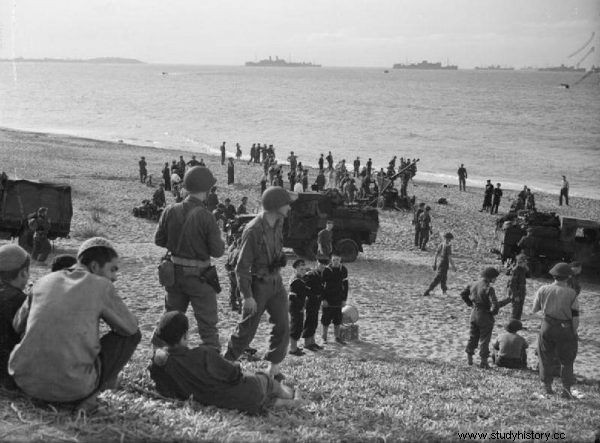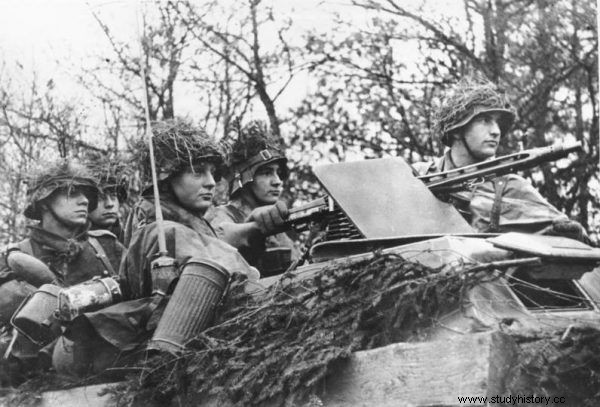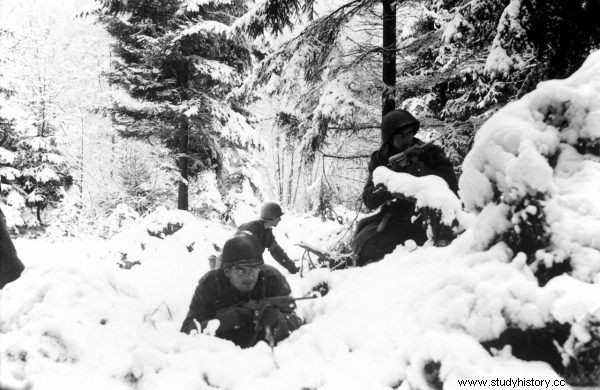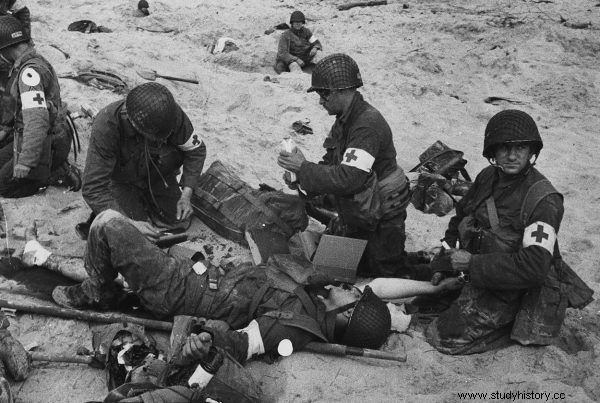World War II casualties are counted in the tens of millions. Movies and books convince us especially of the huge sacrifice and losses suffered by American soldiers. But how many Yankees really died fighting the Wehrmacht?
The start of Operation Barbarossa, the Third Reich's aggression against the Soviet Union, was on June 22, 1941. In the first five months of fighting on the Eastern Front, the Red Army lost 3 million soldiers, killed, wounded or taken prisoner.
At that time, the United States had not even participated in the global conflict that had been going on since 1939. The Americans decided to join it after the Japanese attack on Pearl Harbor on December 7, 1941. Only then did they take on part of the war effort.
Waiting for the second front
This juxtaposition alone makes it possible to understand the rhetoric of Stalin, who argued that the entire burden of hostilities rested with the USSR. The Soviet leader put pressure on the US and England, demanding the creation of a second front in Europe to reduce the pressure of Nazi troops in the east.
The landing of the Western Allies on the Old Continent, however, had to wait. Some relief for the Soviet Union came in early November 1942, when US-British troops landed in North Africa. The struggle with the German-Italian troops staying in this area lasted until May of the following year.

Americans and English after landing on the beach near Algiers. November 1942.
Only victory in Africa opened the way for Roosevelt and Churchill to Europe. In July 1943, Allied troops entered Italy. However, the campaign on the Apennine Peninsula progressed very slowly. The fight against Hitler was still largely on the shoulders of Stalin at that time. Does this mean that the pop culture message about brave Americans is mere propaganda written by the winners?
D-Day
Certainly, the US leaders made many decisions to reduce losses in their ranks as much as possible. This is one of the reasons why the Allied invasion of the continent was delayed. It only started on June 6, 1944. The operation was code-named "Overlord". The allies landed on the coast of Normandy. Three beaches:"Gold", "Sword" and "Juno" went to the English and Canadians who did not meet too much resistance from the defenders.
The Americans were responsible for the beaches of "Utah" and "Omaha". The first of them underwent an exchange of fire, but the landing force was successfully carried out without major losses. On the second, the attacking soldiers faced decisive German defense. As many as 35,000 soldiers were stuck on the bridgehead 1.5 km deep. The losses were high:over 800 people died.
Fortunately, the tragedy was avoided thanks to paratroopers from E company of the 101st Airborne Division. Several company soldiers managed to silence the enemy artillery hidden near Brécourt Manor. As Dick Winters, the leader of the group, recalls in the book "Outside the Company of Brothers", even years later he sometimes received thanks for this action from relatives of the rescued soldiers . Many lives were saved in this way and possible American losses were significantly reduced.
The balance sheet for Operation Overlord can be considered rather favorable in general. As Max Hastings says, choosing when to attack was crucial. In June 1944, the Wehrmacht was already bleeding out in the east. The fighting in Italy also progressed, and the resources of the Third Reich systematically decreased. Had the allies attacked earlier, their losses could have been incomparably greater. It is hard to imagine what the situation of E company would look like, which, even in the "favorable" time until June 28, lost 47% of its composition. About 60 soldiers died or were injured making it impossible to continue the fight.
Not only the Germans were dangerous
However, the success of the Allied invasion was not enough to defeat the enemy. British-American troops still had to face the last great Wehrmacht offensive, which began on December 16, 1944. The cost of the victory turned out to be very high.

In December 1944, the German offensive in the Ardennes was launched.
The Germans intended to capture Antwerp, which would prevent Eisenhower's army from continuing eastward. Their strike in the Ardennes was extremely unfavorable for the Americans. There was practically no fully operational American unit in this area. They were only recovering from the unsuccessful operation Market Garden in September. During it, the Allied troops lost more soldiers than during the landing in Normandy ...
The 101st Airborne Division was also replenishing the losses in December. In the "Easy Company" itself, in the middle of the month the number of employees was only 67%. It was no better in the nearby infantry units. In the experienced troops that took part in the invasion of June 1944, losses were as high as 80%.
Such weakened troops had to face as many as 25 divisions that Hitler had assembled for the winter campaign. To make matters worse, the Allies were taken by surprise. They completely did not expect a German attack. The weather did not allow them to use aviation, which made both reconnaissance and air support for their own troops impossible. As Winters writes in the book "Apart from the Brothers Company" :
Life on the front lines was terrible. The winter at the turn of 1944 and 1945 turned out to be the coldest in thirty years. Before the improvement of the weather allowed for the supply drops, the soldiers lacked adequate equipment, winter uniforms and supplies of ammunition needed to hold the position.

The American troops had a hard time fighting in the Ardennes.
Under these conditions, the war took a huge toll. The soldiers died not only during the fighting. As much as one-third of the losses were due to disease, cases of "trench foot" and frostbite. Overall, the fighting for the Ardennes and repelling the German offensive cost the Allies over 75,000 wounded and killed.
Americans as winners
When counting the American losses, it must be remembered that the US troops, although they joined the war relatively late, fought on many fronts. In addition to the losses incurred in Europe, there are also those caused by the African campaign. Ultimately, throughout the entire period of the war, until Hitler's suicide, American losses in the fight against Nazi Germany in these regions amounted to as much as 750,000. 177,000 of these are fatalities.
Compared to the losses of the Soviet Union, this may not seem like much. However, the amount of losses was determined by many factors, including the tactics and equipment of the soldiers sent to the front. Certainly, when it comes to Europe, time also played in favor of the Americans. They found themselves in an exceptionally convenient position, being able to freely determine when to create a second front.

170,000 American soldiers were killed in the fighting with Germany, and another 573,000 were wounded.
This is not to say that individual units have not been literally decimated. For example, by the end of the war the losses of company E amounted to ... 150%. In the case of a small unit, this meant as many as 48 killed and 100 wounded. The amazing result is a result of some being wounded more than once.
One more question can be asked. Was the death of hundreds of thousands of soldiers in Europe, Africa and the Pacific necessary? It certainly hastened the victory over Hitler. It also limited the march of the USSR - the future enemy - to the west.
There is one more reason to believe that the Americans eventually paid for their participation in the war. According to Paul Kennedy, he made American industrial production grow faster than ever before or after between 1940 and 1944. The increase was as high as 15% per year. As a result of the war, the United States was the only one to become richer, and much richer. After the war, the US gold reserves accounted for three-quarters of the world's reserves. In this sense, the Americans really turned out to be winners of World War II…
